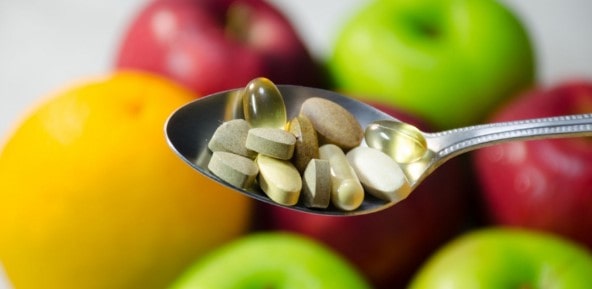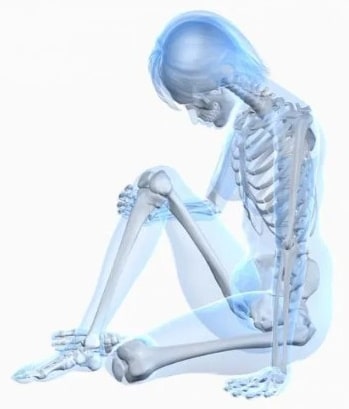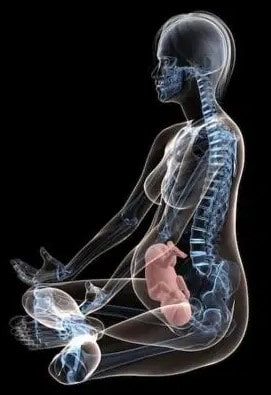
Calcium and vitamin D are essential for development and bone maintenance, teeth and múhealthy muscles. Therefore, it is an adequate intake of calcium and vitamin D is necessary at any age.
We all know that calcium is the mineral más important in the bones; sin él, normal function of bones and teeth is impossible. Vitamin D normalizes absorptionón of calcium that helps the bones and even regulates the functionón muscular normal, Thus, spaghettiéno Becomes important.
Generally, people who consume little milk and milk productsáDairies are advised to take calcium and vitamin D supplements, to complement this déit does
Intake of calcium and vitamin D reduces the risk of fractures, especially in women, and increases the overall mineral density of the tissue óseo in the elderly. It has been established that vitamin D can participate directly in tissue metabolism óseo acting straight throughés of vitamin D receptors (VDR) in its cellular elements.
Index
Calcium and bones
¿Sabías thaté your bones contain the 99,5% of calcium total of the whole body? This is why it is important to get enough calcium of the food you eat. Foods that include a good source of calcium are:
- Skim or low-fat milk
- Low-fat plain yogurt
- Cheeses
- Calcium fortified juices
- Calcium fortified cereal
- Brócoli
- Tofu
Currently, the substitutionóno soda for milk In spañto and others países, has resulted in calcium deficiency in the diet daily. This is one of the reasons whyé the biggestíto the endocrineólogos encourage their patients to take supplemental calcium daily.
Vitamin D and absorptionón of calcium in the body
As we have already mentioned, vitamin D helps your body to absorb calcium effectively. That is to say, if isás taking enough calcium, mayíto waste if you are deficient in vitamin D.

A natural source of vitamin D is sunlight. Without embargo, stay in the sun without protectionón proper skin can be a risk of cáskin cancer. The good news is that, many foods provide vitamin D in your daily intake, What:
- Milk fortified with vitamin D
- Egg yolks
- Properly grown mushrooms
- Oily salt type fishón o atún
Spaghettién you can supplement with daily supplements of multivitamins or vitamin D. And if you prefer, calcium supplements containing vitamin D, to maintain healthy bones.
The best way to have healthy bones is, combining the foods rich in calcium and vitamin D with a consistent exercise routine. Así beáit's on the way, even, to have a strong spine and healthy.
Recommended calcium and vitamin D intake
The table below shows the recommended intake of calcium and vitamin D from the Foundationón National Osteoporosis themselvesúno age, sex and hormonal status:
| NOF recommendations on calcium and vitamin D | ||
| Inñchildren and teenagers | Football (daily) | Vitamin D (daily) |
| 1 a 3 años | 500 mg | 400 UI ** |
| 4 a 8 años | 800 mg | 400 UI ** |
| 9 a 18 años | 1,300 mg | 400 UI ** |
| Adult women and men | Football (daily) | Vitamin D (daily) |
| 19 a 49 años | 1,000 mg | 400-800 UI |
| 50 años más | 1,200 mg | 800-1000 UI |
| Pregnant and lactating women | Football (daily) | Vitamin D (daily) |
| 18 años and less | 1,300 mg | 400-800 UI |
| 19 años más | 1,000 mg | 400-800 UI |
The role of calcium and vitamin D in the treatment of osteoporosis
Para la preventionón and the treatment of osteoporosis, different amounts of calcium are recommended to achieve mass ósea mánormal maximum, keep us upón and minimizationón from péfiring óbe in middle age and old age (preventionón of osteoporosis).

The depositón of calcium in the bones during adolescence is 140-165 mg por díto and increases to 400-500 mg during puberty. mass peak óbe it in an adult it is reached mainly to the 20 años, although there is a slight accumulationóadditional n of mass óbe during the third déeach of life.
The main factor contributing to the increase in absorptionón of calcium in the small and large intestine is the active metabolite of vitamin D – calcitriol. In his absence, only the 10% of calcium entering to the body can be absorbed.
Several prospective and simultáneos have shown that the risk of hip fractures in men is correlated negatively with calcium intake. In the case of women in the menopause stage, the resorption rateón óbe increases and the mass óbe decreases.
In a controlled study over three toños, treatment with Ca salts and vitamin D, that involvedó a 389 between men and women with an average age of 71 años, mostró efficacy to increase mineral density ósea (DMO) in the spine and alsoén reduced the núgroup of fractures óbe extra vertebral.
Importance of calcium during pregnancy and lactation

In the women, the need for calcium salts increases during pregnancy and breastfeeding. During lactation, get lost daily between 160 a 300 mg of maternal calcium with milk.
Studies in healthy women showed a ráask pérdida of table óbe during lactation, followed by an ráask for recoveryón afterés of stop lactation. Are recommended 1200 mg of calcium per díto for women during these períears of life, And till 1500 mg calcium for women jóyou are lactating (until 22-24 años).
concludedón
A balanced diet rich in calcium and vitamin D is just one part of preventionóno osteoporosis treatment. Same as him exercise, getting enough calcium is a strategy that helps strengthen bones at any age.
Nevertheless, in some cases these strategies may not be enough to stop the péfiring óbe caused by lifestyle, medications or menopause. The médoctor can determine the need for an osteoporosis medication in addition toás of diet and exercise.
